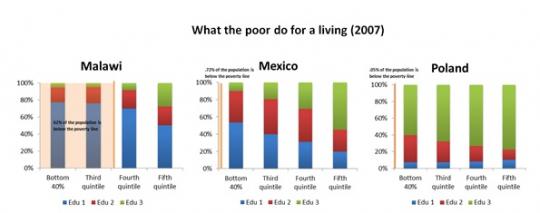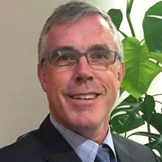Who are the bottom 40 percent of society? Where do they live? What do they do? What other characteristics do they have?
These are just some of the questions we are hoping to answer as part of the World Bank Group’s new mission critical – to end extreme and chronic poverty by 2030 and boost shared prosperity. The renewed effort against poverty is needed as more than one billion people in the developing world continue to live in abject poverty (i.e. on less than $1.25 a day).
Shared prosperity, on the other hand, is a fairly new concept as it is only in recent years that we have seen a dramatic, and alarming, increase in income inequality in the developed and developing world. Fortunately, much attention* is being given to the need to staunch disparity and boost shared prosperity, defined as fostering income growth of the bottom 40 percent of the population in every country.
The Global Monitoring Report team at the World Bank Group is working to make a meaningful contribution to the shared prosperity conversation, by identifying the characteristics of the bottom 40 percent. This is critical to our own work, going forward, of monitoring annually the progress made in the income growth and well-being of the poor, as well as for informing WBG strategy on achieving its twin goals of ending extreme poverty and boosting shared prosperity.
To make a start, we are comparing a few countries, without implying any trends yet. For illustration purposes, we picked a fragile/low income country (Malawi), a middle income country (Mexico), and a high income country (Poland) and have plotted the following indicators by income quintiles:
• Where do the bottom 40 percent live (in rural or urban areas)? To put things in perspective, 62 percent of the population in Malawi lives in extreme poverty, which shows that the entire bottom 40 percent and even all of the third quintile live under the extreme poverty line of a $1.25 a day. In Mexico, less than 1 percent of the population lives in extreme poverty and in Poland extreme poverty has basically been eliminated i.e. 0.05 percent of the population is estimated to live in extreme poverty.
Malawi is among the world's poorest nations and has a high population density. Nevertheless, of the first four quintiles, around 85 percent of the population lives in rural areas. Of the fifth quintile, approximately 57 percent live in urban areas. In comparison, Mexico is highly urbanized and consequently ‘only’ 40 percent of the bottom 40 percent live in rural areas. In Poland, around 60 percent of the bottom 40 percent live in urban areas while this reverses for the fifth quintile. Clearly then, different geographical approaches are needed for each of these countries if we are to reach the bottom 40 percent.
• What activities are the bottom 40 percent engaged in? Malawi’s economy is heavily reliant on agriculture, with more than one-third of GDP and 90 percent of export revenues coming from agriculture. Not surprisingly, in all of the five income quintiles most of Malawi’s population is engaged in activities related to agriculture and mining. However, it is clear from the accompanying graph that of the bottom 40 percent, 9 out of 10 people are engaged in agriculture (and mining). Note again that all of the bottom 40 percent are living in extreme poverty!
Mexico’s economy, on the other hand, is more focused on services and to some extent on manufacturing, with nearly 60 percent of the bottom 40 percent working in the service sector, 10 percent in manufacturing and around 30 percent in agriculture. In the other three quintiles, agriculture plays a smaller role in income generation, with services representing up to around 83 percent of income generating activities in the fifth quintile, and manufacturing representing 13 percent.
For Poland, the distribution changes more gradually with agriculture and mining more important for the bottom 40 percent and gradually becoming less important as income increases. Again, to be able to help the bottom 40 percent, it is helpful to know what activities they are engaged in.
• What is the educational attainment of the bottom 40 percent? Indeed, there are big differences in the level of educational attainment for the three selected countries. For Malawi, most of its bottom 40 percent have only primary education. This is very different for Mexico, where close to 40 percent have secondary education and in Poland close to 60 percent have tertiary education. Again, these educational characteristics can be helpful in informing policy that can assist the bottom 40 percent.
As you can see from the accompanying charts, the characteristics of the bottom 40 percent are quite different depending on which country we look at. This, in turn, will make policy conclusions very different from one country to another in order to boost shared prosperity.





Join the Conversation